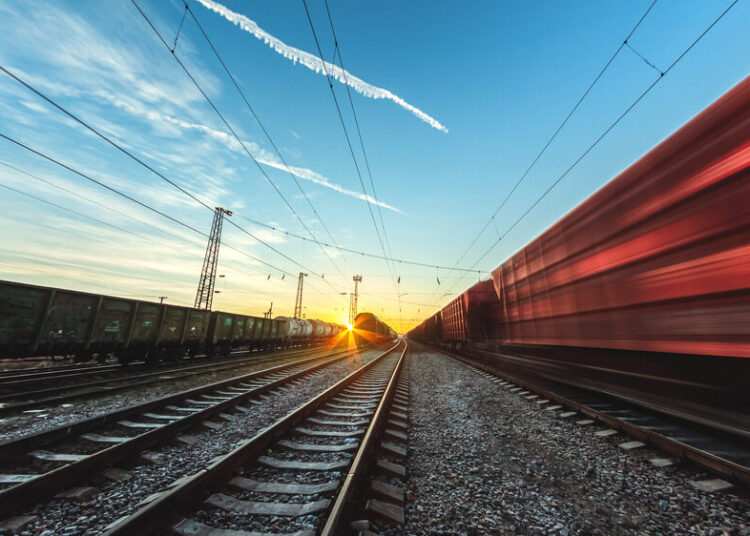Researchers in California are exploring the possibility of using the battery systems in battery-electric locomotives to store power for the U.S. power grid, according to a paper published in the academic journal Nature Energy.
Researchers at the University of California at Berkeley and the Lawrence Berkeley National Laboratory said they explored using batteries as a way to store energy to help address the challenges associated with maintaining reliability amid extreme weather events and intermittent power generation.
The battery systems could serve “as a nationwide backup transmission grid” through which saved power could be shared among regions, meet demand peaks and relieve transmission congestion, according to the researchers.
“Compared to new transmission lines and stationary battery capacity, deploying [rail-based mobile energy storage (RMES)] for such events could save the power sector upwards of US$300 per kW-year [for new transmission lines] and US$85 per kW-year [for stationary battery capacity,” researchers said in the article abstract. “While no known technical barriers exclude RMES from grid participation, addressing interconnection challenges and revising regulatory frameworks is necessary for deployment at scale.”
The U.S. rail infrastructure could serve as a backup system in part because of its size: The network spans 137,000 miles and consists of rights of way and property in some of the most population-dense and transmission-congested regions, the researchers said. Meanwhile, a single train has a capacity of 1 gigawatt-hour of battery storage, which is equivalent to the carrying capacity of 1,000 semi-trucks, they said.
To explore the possibility further, more study needs to be conducted on real-world freight scheduling constraints as well as ensuring that rail battery storage could be a feasible option as a hedge against transmission constraints, they said.
Discussion about using a battery-electric locomotive’s battery systems for energy storage comes as the North American freight rail industry is looking to increase its deployment of locomotives powered by alternative energy as a means to reduce the industry’s greenhouse gas emissions.
Others have also questioned the potential or viability of electrifying the freight rail network for at least some of rail infrastructure, such as at ports.
Subscribe to FreightWaves’ e-newsletters and get the latest insights on freight right in your inbox
Click here for more FreightWaves articles by Joanna Marsh.
Related links:
Union Pacific spending over $100M on 20 battery-electric locomotives
Wabtec, G&W and Carnegie Mellon partner to advance battery-electric locomotives
Freight rail electrification can exist in North America — the question is where
Is electrifying the freight rail network cost prohibitive?
Commentary: No, railroad freight electrification is not dead
The post Researchers explore using battery systems in locomotives to support US power grid appeared first on FreightWaves.














